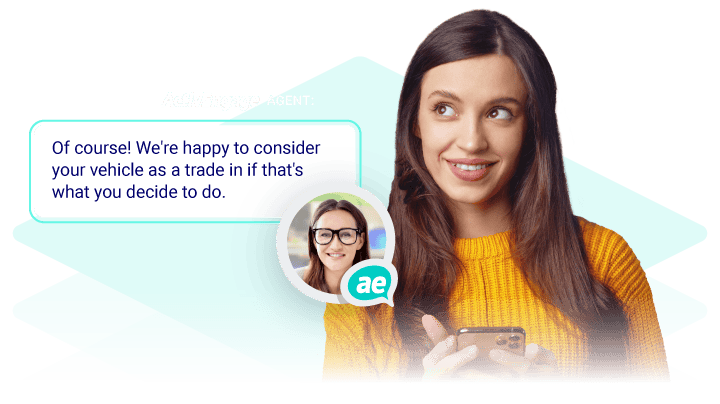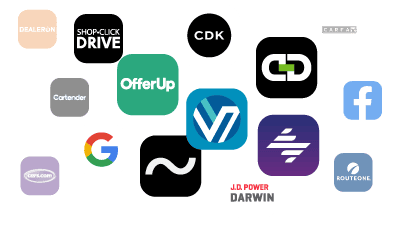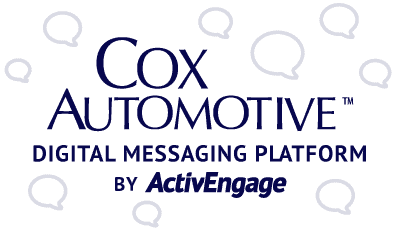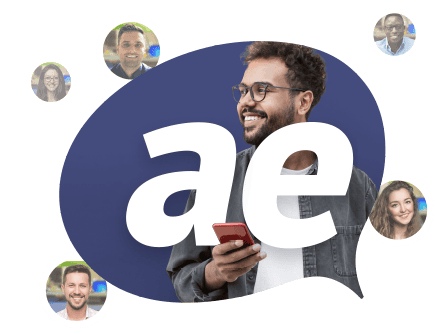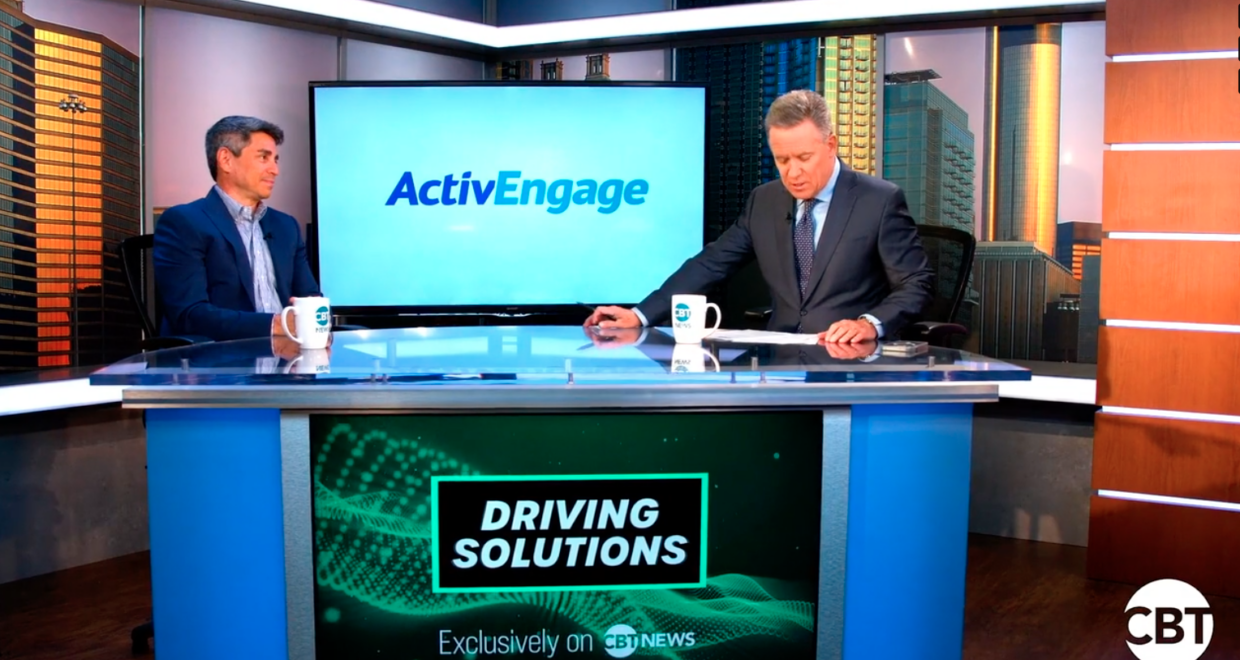Jim Fitzpatrick: I wanna thank you so much for taking the time out of your busy schedule to join me here in the studio and as well as you, Phil, I know that you’re zooming in here as we do nowadays, so thank you so much for joining us as well.
Jim Fitzpatrick: Ted, let me kind of start with you here if I can. What are the trends that are coming up in the dealer consumer online car sales? I mean, we hear so much about it and consumers are out there that they’re doing more and more online as we know. It seems the dealers that I talk to are trying to race feverishly to catch up with that, right?
Ted Rubin: Yeah, no, absolutely. What we’re seeing very commonly is people are engaging in this digital retailing tool and this digital retailing atmosphere. There’s a lot of it out there. Dealers themselves are trying to figure out what the best ones are and which ones can help the customers navigate more easily. And really that’s moving the entire customer base to utilize these digital retailing tools even more as they become easier, as they become more integrated with the fluidity of the process, I think, of helping a customer to navigate… not so much just say, hey, I’m gonna put you in the buying process, but as they help them kind of maneuver through the search and get involved with customer advocates or things like that to be able to kind of help them get through into the sales process because in the beginning, it looked like they were all just kind of, hey, you wanna buy a car? Here you go.
Jim Fitzpatrick: *laughs* “Let’s set an appointment!” Right?
Ted Rubin: Right! That’s right And I think that certainly since COVID, as customers have had a chance to take a breath and go, okay, I can start looking more at inventory, start kind of reviewing the cars and things. They want the online process to be very similar to what was in the store. So they wanna be able to kind of go step by step methodically through it instead of feeling like “BOOM you’re in it!”. Right, now I have to be able to get there.
Jim Fitzpatrick: That’s right, that’s right! Phil, have you seen that to be the case as well?
Phil Battista: Yeah, we see a lot of change going on, especially at the OEM tier one level where a lot of the OEMs are trying to take a very specific approach to how consumers engage with them at the brand level. And then how that gets transferred down to tier three is still in process today, Jim. But definitely we see the push being at the tier one level where the OEMs are driving the new buying experience on their brand sites today.
Jim Fitzpatrick: Yeah, for sure. And really it’s amazing because through COVID, we saw so many consumers taking this approach where it’s “let me stay in the comfort of my own home.” Many people thought that COVID kind of pushed that ahead by maybe nine or 10 years in terms of the modern retailing aspect of it. Then we saw it come back down a little bit and now we’re seeing more and more dealers going, wait a minute, this is really the future. There’s no question, right?
Ted Rubin: No, there’s no doubt about it, absolutely.
Jim Fitzpatrick: Yeah for sure, for sure. And having said that during that same period of time, post-COVID, we saw more and more OEMs, to your point, Phil, where they were saying “No, consumers want this and we’re gonna do what we can on our side to provide the tools necessary and also to kind of push the dealer into this!” Right? Because it seemed to me like the consumer wants this, the OEM wants this, and the dealer was kind of kicking and screaming, going “No, we want them to come into the dealership!” which is crazy.
Ted Rubin: No, no, it’s absolutely true. I think that tools like what JD Powers-Darwin has and how we have this new integration with them that they’ve kind of had the foresight to want to streamline this process and give them a very similar interaction to what it is when you go into the store. When you go into the store, you don’t say, hey, we’ve talked about this before. You don’t kind of say “Hey, I’m buying a car today.” and they go “Okay go over there, figure it out on your own.”
Jim Fitzpatrick: That’s right.
Ted Rubin: You know, you meet with the salesperson who starts looking at your needs and starts trying to figure out what it is that they can get you into “That is gonna be good for you, that’s what you want, what your interests are, why you’re buying the car”… which is a huge question that we’ve always talked about.
Jim Fitzpatrick: That’s right.
Ted Rubin: And so then you have to be able to navigate through the process, and a lot of that process, in fact, in this store is not as advantageous as like what the Darwin tool will do, which is the salesperson kind of going back and forth away from you, where now they can navigate this process. You can have an advocate, which can be the Activengage advocate.
Ted Rubin: And the way that we’ve integrated with this exceptional tool is that they have all the assets very clearly online. It’s really a very defined process where you can really see, as a consumer, where you’re going and what the steps are. And now, with the integration, the advocate, the rep who’s talking to you, the salesperson in essence, is essentially able to see every single step and what you’re actually doing as a consumer. So you don’t have to engage.
Ted Rubin: There’s no requirement for you to engage with an advocate, but if you do, then they actually know what you’re doing. They’re gonna talk to you and figure out what it is that you need, and they’re gonna help you through the process, understanding the detail of the process as you’re moving through this digital retailing piece with Darwin.
Jim Fitzpatrick: That’s a nice feature to be able to have that person follow you along rather than starting all over as soon as you reach out to somebody. Right?
Ted Rubin: Yeah, yeah. I mean, I don’t think that it’s possible… There’s a lot of digital retailing tools that are out there that … they don’t really follow a true process. If you kinda break their system, if you kinda move away from an area, then it’s not as easy. And what Darwin did, what JD Powers Darwin did, was they made it so that you can kinda engage at any point, even without an advocate.
Ted Rubin: But the advocate will always know. So as soon as you do engage, they know exactly where you are. They know what the next step should be, but if the customer wants to jump, if they wanna bounce from looking at vehicles to go right into a credit app, or if they wanna take a step back and they wanna know “Well, I’m looking at a car I’ve looked before, but I wanna find some aftermarket products, so I wanna know what the extended warranties are…” then you can move around inside the Darwin process pretty well. Nice, very nice. Which is super cool.
Ted Rubin: And it’s really just giving what the customer needs at the moment that they’re asking the questions or giving them what they want. And if they wanna engage, then it’s there, and that person knows what’s happening. And if they don’t wanna engage, then they can follow the process on their own, because it is a pretty easy process that has the entire system streamlined.
Jim Fitzpatrick: That’s very nice. That’s very nice. Phil, jump in here! Tell us a little bit about the tool from your perspective.
Phil Battista: Yeah, so Jim, just to go back a little bit… the cat’s kind of out of the bag, right? COVID brought to the table these new aggressive tools for consumers. They were never gonna go backwards, right? Consumers still want them now… OEM see benefits from that. It’s kind of like when dealers were afraid to put their cars on websites. Could you imagine a dealership today saying, I’m not gonna be able to sell on websites?
Jim Fitzpatrick: *laughs* You wouldn’t have a dealership anymore.
Phil Battista: It’s kind of the same thing that’s happened with digital retail. But buying a car is a complex process. Ordering a car is even more complex. And not having an advocate along the way is difficult. So I was an auto dealer for many years. And I will tell you, we all share the same fear of “Hey, somebody’s walking around without a salesperson!” right? Somebody go help them.
Jim Fitzpatrick: I remember the days. I can remember. You could get fired if that dealer rolled in his car and he saw two or three people on the lot unattended.
Ted Rubin: Oh my God.
Phil Battista: So now we have somebody like Ted who’s sitting on his couch at 11 o’clock, right? Working on a vehicle without anyone. So the customer advocate now becomes that person who helps the journey. So when the customer’s getting stuck, and I always use this example for people: if you’re ordering a car or a truck… trucks are really complex to order. And I think we’re gonna see the US ship to more of a bill to order model at a higher percentage than what we see in dealerships today.
Phil Battista: So doing that adds a layer of complexity right? The complexity could be, I want the black wheels with the sunroof. I don’t realize I have to get the sport package or I can’t get it, right? Enter an active customer advocate, right? But a customer can get stuck and say “Okay, why can’t I get my black wheels??” Right? And then somebody now can interject themselves. Say “By the way, if you take the sport package, you automatically get that (black wheels).
Phil Battista: That’s the value of having deep integration with a company like ActivEngage, where they can insert a customer advocate, whether it be at the tier one level, and then if that seamlessly goes to tier three, at the dealership then the conversation continues and the customer feels warm and fuzzy. The other side of that is, now the dealer feels warm and fuzzy because the customer’s not doing this 100% on their own because they’ve got this advocate. That’s why I really think that’s beneficial to us both on both sides of the equation.
Jim Fitzpatrick: That’s right. That’s right. Yeah, there’s no question about it. And I would imagine, Ted, that something like this takes some training, right? In terms of making sure that that advocate that you speak of… also known as a salesperson, right? Is trained in this area, right? And that’s something that you guys help them with.
Ted Rubin: Yeah, I mean, there’s a lot of training that goes into getting our people up to speed. They learn walk-arounds with actual salespeople from the dealership so they can actually do it just like the dealers can. It’s part of their training in the process. There’s about six weeks that they go through.
Jim Fitzpatrick: Oh that’s fantastic!
Ted Rubin: Just focused on how to navigate the sites, how to navigate the Darwin process, and also how to navigate “Well, what happens when a customer buys a car and what happens in store and why is that different than what’s online and what’s the expectation of the customer?” Because they wanna know how all of this is gonna transpire so that they’re prepared when the customer starts asking them questions.
Jim Fitzpatrick: You touched on some of the things that put the ActivEngage product unique in the marketplace. But talk to us a little bit about that.
Ted Rubin: Well, I mean, I think that specifically with the JD Powers piece, this interaction is something that really hasn’t been seen before. The depth of integration between the two tools.
Jim Fitzpatrick: I was gonna say, I’ve interviewed, as you know, hundreds of different vendors and companies out there, and this element I have not heard of.
Ted Rubin: Yeah, this is a really cool thing. You have to start with a tool that is just super robust, as a digital retailing tool, because otherwise you’re not gonna be able to really facilitate much for the customer because as an advocate, you’ll run into blockades. And so there had to be a tool that had the capability to really get the customer all the way through. A lot of them tend to stop or they tend to not really complete the process or they have gaps and this is not the way it is. This is a super robust tool.
Ted Rubin: So as Phil and I were talking and looking at doing this together, it was about… he was very passionate actually, which is great, we love that, about the fact that it is true.
Jim Fitzpatrick: Well, as an ex dealer too!
Ted Rubin: Yeah, as an ex dealer. He’s looking at it from that standpoint. There’s no doubt about it, that you have to be able to have the customer with somebody who’s working for the customer. I mean, they’re a dealership employee… if it’s a salesperson… they’re essentially being contracted by the dealership if it’s our advocates, but it’s someone who’s working on behalf of the customer to help them get what they want. And the more you help them to get what they want, the more successfully we’re gonna be in selling them a car, right? Because they feel that it’s earnest, that it’s true.
Jim Fitzpatrick: That’s right!
Ted Rubin: The trust that you gain through the process by having a very visual process, like the digital retailing process that we’re talking about that we’ve integrated with and then having a person endorse, this is safe, this is what we’re gonna do, this is gonna work for you, we found these vehicles, are you okay with those things? And the interactivity between the advocate and the customer as they navigate this very clear process through the digital retailing piece that Darwin has is really what makes this super unique and super special, actually.
Jim Fitzpatrick: And there’s a video component to it, right, yeah? So talk to us about that because that’s everything now.
Ted Rubin: With our piece, with the MyDrive piece, not only are we able to show videos as we’re helping to navigate through the process so we can show videos of why would you need wheel and tire or why would you need windshield warranty or why would you need an extended warranty on a vehicle.
Ted Rubin: But beyond that, it can be transferred, especially because this has all the pieces to get through F&I. So if one of our advocates is navigating the customer through and they’re like, I wanna buy it now, I’m ready to go, then we can transfer the communication piece into the store directly to an F&I manager. And they can be on video so that, again, you’re building trust with the customer so that the F&I manager is actually seen by the customer.
Jim Fitzpatrick: That’s great, what a handoff that is!
Ted Rubin: Yeah, it’s a really powerful handoff. The customer feels like they’re moving through the process, that they’re making headway. It’s the same, I mean, Phil started to talk about it. We have this piece that we also developed, which is, so now if the DR is being used at tier one, just to be able to help give a more robust lead for the dealer, to be able to know more about the customer, then they can actually enter that process, have an advocate at the tier one level with us as long as they’re using the messaging. And then as they get deeper into the process, we can actually move them with the Darwin piece all the way down to the dealership level… not break the communication.
Ted Rubin: So they’re still talking to the same advocate. We can navigate them all the way through the process and then transfer them to the F&I guy, and attribution still goes back to the OEM, but the dealer is selling the car from the dealership. So you have a happy OEM and you have a happy dealer, and you have a super happy customer that didn’t have to navigate multiple sites and talk to different people to be able to get that.
Jim Fitzpatrick: Which is what they’re doing now and getting extremely frustrated as a result. And it seems like, to me anyway, retail automotive is kind of one of the last people to arrive at this party. I mean Amazon is out there and every single retailer is out there, and yet automotive has been kind of late to this show, right? Where this is almost an essential element today. Is it not? I mean, if you were a car dealer today, wouldn’t you find this to be the case, Phil?
Phil Battista: Yeah, I mean, the good news is I’m on the ground with dealers every single week, right? So I see it firsthand, but don’t forget a car transaction is very complex. So if you look at some of the other OEMs outside of our traditional OEMs that have tried direct to consumer, it’s great until it doesn’t work, right? When the customer gets stuck and that has to do with the complexity of the transaction. So even some of the … what I’ll call early innovators– thought about this process of “Hey, we can be like Amazon and hit a transaction at the same level!” and found out that they stumble because the percentages just don’t speak to the success.
Phil Battista: So JD Power we’re a data analytics and software company. So the data suggest that customers want to do this. The analytics tell us they’re frustrated, more people are using it, and software’s fix that solution, right? The software here is the customer advocate. So now we take all this great technology that exists, not just ours, but others, and now you start interjecting the ability to have a customer advocate in the process. It brings the level of complexity down and drives utilization up, right? And that’s what we’ve seen from a data and analytic perspective.
Phil Battista: So we think that this is the path that it’s gonna continue to grow and get better and better. Where if a consumer wants to take what we like to call an off ramp and say “Oh my God, I’m stuck, I don’t know what I’m doing, I don’t know what this means, I can’t get to the right payment, where do they go??” Right, one of the paths they can choose… obviously to go to the dealership– another path could be “Hey, I want to engage my customer advocate to solve this.” We need to be able to provide that to them. If you look analytically, the data suggests that the single most important part of the purchase is still the test drive. Well, we can’t do that online yet, right? Well, what we can do is generate excitement about that
Phil Battista: Ted talks about some of the videos with professional drivers in the car, trying to elicit that same emotion online. And then we can also say “Hey, by the way, we have the ability to bring a car to your doorstep tomorrow for you to test drive, would you like to do that?” Now that’s where the customer advocate comes back in, right? So the video technology provides the consumer some excitement without physically touching the metal, smelling the car, et cetera. And the advocate closes the deal by saying “Hey, let’s get you into the vehicle, whether or not you want to come into the dealership or I’ll bring a car to your office or drop a car in your house.” Kind of close the loop.
Jim Fitzpatrick: Sure, sure. And isn’t it true that, I mean, we see vehicles obviously now through Carvana and Vroom and some of the other people out there, they’re literally selling the car, even without a demo drive or somebody sitting in it. More and more consumers seem to be okay with that, right? I mean, especially if there is a somewhat of a liberal return policy. So if a dealer says “Look, we’re gonna sell it, we’re gonna do the whole deal, we’re gonna ship it to you. Listen, if for any reason you don’t like it over the course of the next couple of days, then we…you know, don’t worry about it. We’ll take it back, we’ll rip up the contract, whatever it might be.”
Jim Fitzpatrick: Some of the dealers that I’m talking about or talking to, I should say, do that. And they have a lot of success with that. So is it safe to say that fewer consumers each year are requiring… I should say “fewer” are requiring, you know, a demo drive and to sit in the car and they’re just going “Look, I love the car. It’s my third BMW or Toyota” –or whatever the case might be…”Send it over to me. Let me get this whole deal done!”
Phil Battista: So you run up a lot of good, kind of a lot of good points. *laughs*
Jim Fitzpatrick: *laughs* I know, I’m sorry about that. It’s a loaded question. Let’s talk about that.
Phil Battista: *laughs* I’m too old now to work that fast, but I’ll do my best. So we’re looking into a couple of buckets that we need to think about. One: consumers definitely interact with pre-owned vehicles very differently than doing the new car side. Okay. On the new car side, right, there’s a different level of emotion that exists, right? The new car smell, in some cases, could be the first new vehicle for a person, right? That’s a separate bucket on the new car side. On the new car side compared to pre-owned.
Phil Battista: When you start talking about high lines, what we’ve seen in the luxury brands, there is a propensity for “I’ve had five Mercedes and I just want the brand new E350” … I might buy that or lease that without actually having to drive the car. Unless the model is changed, right? Unless there’s new body style enhancements in the vehicle, then I would argue that the data points that customer wants to get into that car.
Phil Battista: So I think it’s important to bucket them, but you’re spot on in the Carvana room model. They know that they have to be able to have a liberal return policy because the consumer can’t drive that vehicle, right? So that’s a buffer for them against the no demo ride philosophy. So we coach a lot of dealers around that saying the same thing, right? If you’re gonna be in the pre-owned world, you wanna sell “direct to consumer” online because where that number starts to trend positively for the dealership is a unique pre-owned vehicle.
Phil Battista: Let’s say a customer is looking for a used Shelby GT500, five speed or six speed, right? With another 50,000, they buy one in Texas. They don’t care about driving the car. They wanna have that car shipped and then they wanna buy that specific vehicle.
Jim Fitzpatrick: Yeah, that’s a good point.
Phil Battista: Demo is less important there. So I think where people get stuck is they try and holistically apply an approach across new vehicles, new vehicle luxury, pre-owned, right? Pre-owned specialty vehicles. I think you have to separate them to really understand where the data points.
Phil Battista: And then depending what business you’re in, you’ve got to target that particular bucket, right? So if I’m gonna be in the high line… I wanna go after as much remote connectivity to a customer and let the customer do as much of the deal at home because I know those customers like to do that. Sure. If I’m mainstream and people are gonna shop, shop, shop, I gotta make it as easy as possible. Because I know there could be five other Honda dealers just in my metro area that consumers are gonna shop. So why are they gonna buy from me? One, I have to have the vehicle today because inventory is short, but two, I have to make the process transparent and easy for you. Otherwise you’re going to the next store in my market, right? So the strategy is individualized based upon those buckets in our opinion.
Jim Fitzpatrick: That’s right. This is no longer for dealers a “nice to have”. This kind of system and this kind of program is something that’s a must have. I mean, and if you’re going to survive in the next 20 years, a lot of the dealers… a lot of the kids of the dealerships or dealers I should say that I speak with to talk about the future. They’re taking over mom and dad’s dealership. They’ll tell you right up front, one of the things that they really wanna get right is online sales and modern retailing so to speak. And if we don’t get that right as running the dealership, then we’re gonna maybe not survive because the OEMs want it, the consumers want it. It’s funny because when you talk to the parents just a year or so ago or two years ago, they were like “Well, kinda, it’s not maybe not necessarily that important.” And the kids taking over their parents’ dealership are going “Oh, no, no, no, this is the future of retail automotive! Right?
Ted Rubin: No, there’s no doubt. I mean, YES, and I know that Phil and for us at ActivEngage– we’ve been talking to the OEMs about digital retailing for a decade. This is not a new thing for us. It’s coming more to bear for the industry at a dealer level and where you’re actually starting to see engagement. There had to be some motivation to kinda get people into it. And back to the question that you were talking about, I think that if a customer knows the vehicle or there’s one, like what Phil was talking about “There’s one, it’s a used car, there’s one of those. Send it to me!” Then yeah, they don’t need to see the car.
Ted Rubin: But I think that traditional dealers still do have a pretty big advantage in that it’s a very motivating thing to test drive the car. We try to do as much, we’ve tried to instill as much motivation through the videos. You watch these really cool videos of driving a car in special places and how they’re doing it. Phil is making me feel like I really need to get like Sensovision or something now so I can send. Like a smell through the computer.
Jim Fitzpatrick: It’s a hologram, exactly!
Ted Rubin: But of the new car smell. But I mean, we’re trying to find ways to build trust. Because that seems to be one of the biggest things. Every time that we survey “What’s the most meaningful thing for you in the interaction? Whether you’re doing it by yourself or with an advocate…it’s significantly about trust. And it is absolutely an essential tool to be able to have someone in our belief. That you can have a release valve for. Someone who can take up the slack, answer questions. Just someone there in case I have a complaint about something and I’m trying to figure it out and to kind of diffuse it and then get them back on track so that they do want to purchase. There’s a lot of reasons that you have employees that are customer facing at the store. To not have them online is absolutely “looney-tunes” as far as I’m concerned.
Jim Fitzpatrick: I agree, I agree. Which means we’re also looking down the road at a different skill set for the men and women that we bring into the dealerships for these positions. That’s a safe assumption. Today’s car sales professional is not necessarily going to be tomorrow’s car sales professional unless they get on the program and understand that. Because so much of this is gonna be online. So the more fluid that’s gonna be.
Ted Rubin: Yeah! As the tools evolve and they get closer to being able to replicate that process. I think that this interaction, the kind of very unique exclusive interaction, you’re not seeing with any other companies whether they’re digital retailing or chat or anything. The ability to be able to really know what the customer is doing and assist with exactly that thing.
Jim Fitzpatrick: That is huge. There’s no question that’s huge. I’m putting my dealer cap back on and that is a really nice feature to have. There’s no question about it. Hey, before I let you get out of here, talk to me about what’s new at Active Engage Out to Lunch. What is that?
Ted Rubin: Yeah, we have a new tool that’s called Out to Lunch and it’s a call management tool. And so effectively what it is is that… so you can put it on your IVR. And it’s designed to make it so that –I mean the worst time to call a dealership is between 7:00 to 9.30 in the morning. Everybody’s calling in “Can I bring my car in? Can I get an appointment? Is my car ready? Is this before work?” Happens again at lunch and then at dinner. And a lot of times, even off of those times, it’s hard to get through. Salespeople are with other people and stuff.
Ted Rubin: And so we’ve been thinking about “Hey, we’re a communications company. We have this entire communications platform. How do we kind of help to solve that problem and we’re not at the dealership?” So one of the things is we first tried to do was supplying personnel, right? And we were trying to take the calls and it’s a one-to-one relationship so it’s kind of expensive and dealers who were using it were still hitting the max on their phone lines at those times of the morning.
Ted Rubin: So what we ended up building is this product called Out to Lunch. And effectively, so now when you call into a dealership, if you have our tool deployed, then it can give the customer the offer “Hey, I can get you to sales or services in a way. But if you want to talk to a live person right now via text, press one.” And through that process, it’ll actually transfer, with the customer’s authority, it’ll transfer the call into a text and now you’re actually talking to us through text instead of on the phone. So it gets the customer off the phone line. I can have one rep handle two or three customers at the same time. It’s happening through text or through chat.
Jim Fitzpatrick: *laughs* That’s fantastic! I just did this yesterday with Delta Airlines and I loved it. I’m like, this is fantastic. In fact, I booked my flights through text messaging doing just that.
Ted Rubin: Yeah, the key is you have to have people who are gonna be there, you have to have people who know the sales process. So we can actually now have a customer call into the store and direct them. You know…who wants to put a call up in the air? You call in and say, “Can I have sales?” The operator going “Okay, let me see if I can get a salesperson.”
Jim Fitzpatrick: Oh it’s the worst, the worst!
Ted Rubin: And then you’re on hold for five minutes and then it goes back to the operator. So this avoids all that. You go directly to an advocate who can help you. They answer “How can I help you?” – “Well, I want to find out about this car. I can help you with that. I wanted to find out if my car’s ready. I can help you with that. I want to make an appointment for service. I can help you with that.” So there’s nobody else to go to. If they go into the sales process, then we can take them all the way through the sale with the Darwin tool.
Ted Rubin: So we have the ability. So now on a phone call, I can actually get all their information, identify all their needs and wants and why they’re buying the car. That call will now become a lead. So every single call that gets transferred to us is gonna go into the CRM. We’re gonna have identification of what it is.
Jim Fitzpatrick: Nice! That’s really nice.
Ted Rubin: You don’t have to have as many operators or people that may or may not be available. You’re gonna record it all. And if they’re willing to keep going, I’ve called before, I wanted to get the answer to this and I want to buy the car. Well, we can run them through the digital retailing process and complete even more of it. Take their credit app. You’re not doing that over the phone. Identify what it’s actually gonna do for them, what their actual pricing is and move them through the sales process. So now what’s left to do is for them to just deliver the car.
Jim Fitzpatrick: Wow, that is really nice. There’s no question about it. I remember listening. I’m sure, Phil, you can back me up on this. You would listen to the phone calls coming into your dealership through all of the different platforms that are out there on the floor. You never made it through like the third call and you’d say”Please hang up, I can’t do this, okay? We’re spending $1,000 a car in advertising and nobody’s answering the phone.” And if they do, they’re answering it completely wrong. So I commend you on that. That is a tool that is just incredible. So Phil, I’m gonna give you the last word on this. What do you want the dealers to know about this?
Phil Battista: So I want the dealers to know that this is evolution, right? If you look at the automotive news, they just posted a really nice article supportive to the evolution of this digital retailing environment changing. It was around Nissan and buy at home and how they had this now add an F&I component, right? That’s evolution. So if you think about it now, OEMs are saying you need to have a digital retailing tool. Dealers are saying, I want to do it, but how do I do it profitably? We say that you need to do that with F&I and now it’s being supported. So if you’re gonna put F&I in it, you need to have the next evolution of a customer advocate because it’s complexity again, right? Hey, can I get this with a service contract with no deductible instead of $500 deductible? How does the customer get that question answered?
Phil Battista: So this is a continual evolution to us. So dealers need to embrace it. They need to get feedback, right? Because you’re gonna concede this companies like TEDs are gonna continue to evolve, right? They’re gonna continue to change base and dealers need to get their arms around it. And the ones that are afraid, I would ask them if they want to challenge themselves to turn off their websites, right? That they didn’t have 15 years ago and see them continue to exist. That’s what digital retailing is, right? At some point in time, they’re gonna recognize that this is a must have, not something that’s nice to have. So I challenge the dealers to challenge themselves.
Jim Fitzpatrick: That’s right, I couldn’t agree more! Ted Rubin, CEO and Founder of ActivEngage. Phil Battista, President of J.D. Power Dealership Technologies & Modern Retailing. Thank you!
End of Interview

